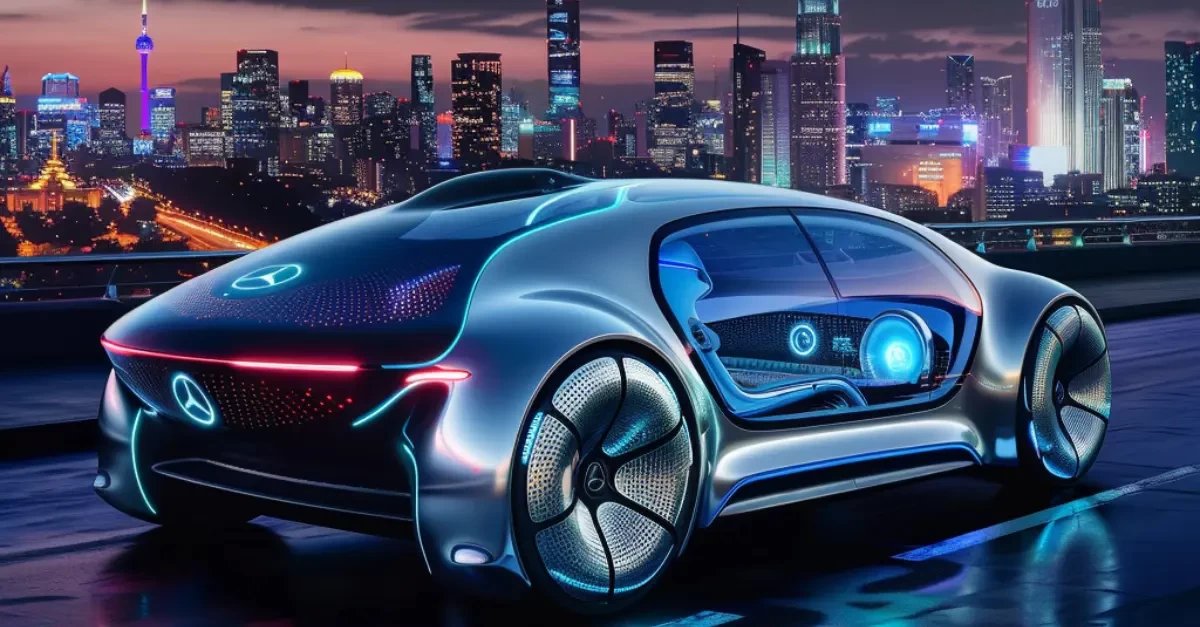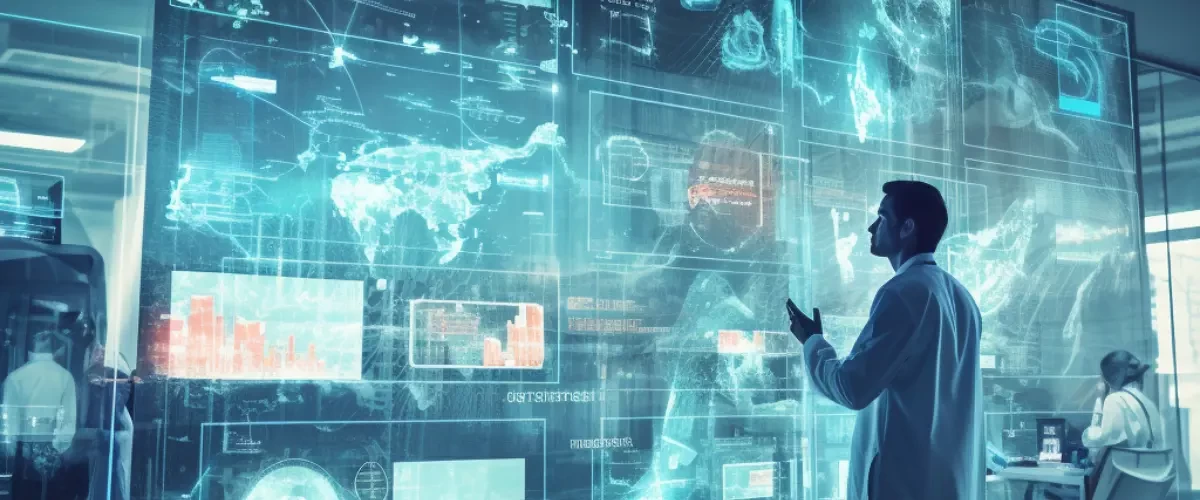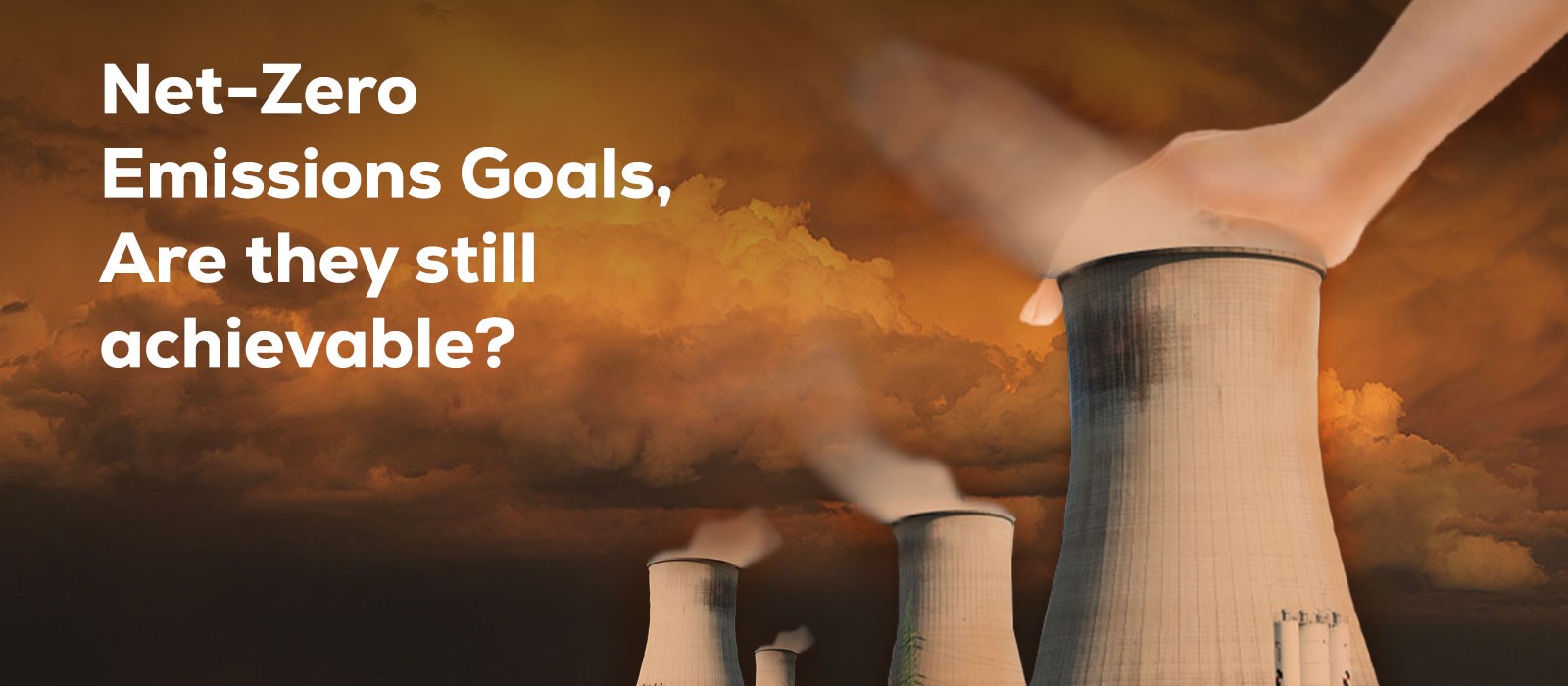Net-zero Emissions Goals, Are They Still Achievable?
What do net-zero emissions mean?
'Net zero emissions' refers to either balancing greenhouse gas released and removed from the atmosphere or offsetting it completely, that means emitting no greenhouse gas into the atmosphere, that is, no CO2, no methane, no nitrous oxide or by removing an equal amount of greenhouse gas from the environment and storing it permanently in soil, plants, or materials.
Eventually, through agile and sustainable production methodologies, we will stop producing greenhouse gas emissions from the industries tipping the ranking and get those scales back into balance.
But the main question that arises is, if we will have zero emissions, then why are emissions still significant to the net rather than zero calling it net-zero? Because even if we decarbonize our industries or stop industrial greenhouse gas emissions, we will still be left with a rump of emissions by 2050. We have to deal with all the emissions we’ve already pumped into the atmosphere over the years. Most of those will come from hard-to-abate sectors, including farming, aviation, heavy industry, and waste.
Why are net-zero emissions important?
By stopping the use of fossil fuels, we cannot stop global warming overnight, and it isn't as easy as turning off a tap. Carbon dioxide, the main contributor to climate change, will stay in the atmosphere and increase future global warming levels on the frequency and intensity of natural events.
So, reducing emissions is extremely important, but we can't stop there. To get to the end goal will need ways to remove carbon from the environment. That is where the need for net-zero emissions and greenhouse gas removal from the atmosphere comes in.
Decarbonizing heavy industries and aviation & shipping, planting trees, restoring wetlands, and technologies such as direct air capture of CO2 can tip the carbon accounting scales to cancel out the remaining carbon stacked up, leaving a country or business at net zero. Other solutions are at hand to restore the global climate to pre-climate change levels. Solutions & actions, including phasing out coal, investing in renewable energy, reversing deforestation, and switching to electric vehicles, will immediately be needed.
To get to net-zero emissions, we need to reduce greenhouse gas emissions to zero by using the above solutions, and these solutions will also help to crack off present harm by drawing down past disasters.
Net-zero emissions goals will be a key to limiting climate change and past to present disasters following the last five years of devastating natural disasters, including raging wildfires and flooding due to increasing records of heatwaves across the world.
The below graphic represents the temperatures recorded during the last five years across the globe, according to a report by the World Meteorological Organization.
What are net-zero emissions goals?
Net-zero emissions goals come after the historic Paris Agreement in 2015, where nearly 200 countries agreed to limit the global temperature rise to below 2C (3.6F) to prevent catastrophic damage caused by global warming.
In 2018 the timeline and need for the goal were spelled out more clearly. The long-term objectives helped spur countries to set a goal of net-zero emissions by 2050, including the first major economy, the UK, in 2019, followed by the world’s biggest emitter China in 2020, which pledged it would reach “carbon neutrality” by 2060. And India is one of the latest countries to pledge net-zero, with Prime Minister Narendra Modi announcing at COP26 to achieve that goal by 2070.
The Paris Agreement was re-examined at the Glasgow COP26 summit held in 2021, where leaders from nations were asked to deliver more ambitious pledges on how to reduce the chance of indulging the devastating consequences of breaching the 1.5°C thresholds.
Major economies, businesses, and sub-national actors such as states and regions, have set four goals to achieve their own net-zero emissions targets. These include:
The above goals, including global net-zero and 1.5C, protecting communities and natural habitats, mobilizing finance, and collaboration, should be followed by nations pledged in the summit. They also have to adopt the solutions discussed in the introduction to achieve the targets by 2050.
While government, finance, and technology play an impetus role in underpinning and enabling the path toward carbon neutrality. There is still a requirement for rapid and widespread changes in policy and investment across many organizations and states in different nations.
Keeping in mind the social and economic trade-offs, state-wise policy reforms, investments, and additional innovation can further improve technology solutions and reduce the costs of renewables.
So, is it possible to achieve net-zero greenhouse gas emissions by 2050? Yes, because technologies and processes to largely decarbonize energy, mobility, food, aviation, industrial, and manufacturing (steel, cement, and chemical) sectors by 2050 exist, but they are at various stages of development.
Support from policy-makers and creating consumers' demand for more renewable energy, low-emissions transportation, and high-quality carbon offset products are required because technology alone cannot achieve up to 100 percent decarbonization by 2050.
Here are three areas that will be crucial for a quantitative pathway to carbon neutralizing the organizations substantially.
Augment Technology

Businesses around the world are developing solutions to undergo a net-zero transformation. Those developments will need to be completed by considerable investments in technologies such as carbon capture, hydrogen electrolyzers, and bioenergy to compete with fossil fuels.
IFA’s findings say negative emission technologies such as carbon capture, hydrogen electrolyzers, and bioenergy will help offset pollution from large swaths of the economy, and it is possible to limit global warming to 1.5 C by 2100 in the next three decades.
Even fragmentary subjects can be handled through longer-term energy storage or conversion to hydrogen – which can then be used as alternative fuels and cleaner fossil fuels, such as natural gas (CNG and LPG) in transport and power generation and industry.
In moderate sectors, technologies are also available to lower emission footing. In steelmaking, electric arc furnaces are cleaner and can decarbonize scrap metal recycling. New low-carbon steel can be produced using technologies such as natural gas, hydrogen electrolyzers, and bioenergy instead of coal in the energy-starved process of iron-ore reduction.
Hydrogen could replace natural gas in existing distribution networks of electricity generation and heating industries, accounting for roughly 60% of the total power produced. Many of these clean-energy solutions, while technically proven, will need to be implemented rapidly at a huge scale to make them more economically viable - but technology companies alone cannot make it possible; it demands communication between systems that battle with the complex and multifaceted net-zero economy.
Policy Reform
 Efforts to push organizations to do more to address climate change would not be possible without priceless policy changes. To align the market, setting clean energy standards, emissions targets, carbon prices, and other regulatory and policy mechanisms will be essential via support from global and regional legislatures.
Efforts to push organizations to do more to address climate change would not be possible without priceless policy changes. To align the market, setting clean energy standards, emissions targets, carbon prices, and other regulatory and policy mechanisms will be essential via support from global and regional legislatures.
Also, externalities associated with accounting for a wide range of emissions-intensive activities need to be incentivized to create a sustainable and viable market for CCUS to incorporate the full breadth of endeavors.
On the policy front, governments to efficiently price carbon impact through carbon tax are materializing and will likely be mainstream relatively soon. Broad policy packages financed by players across the financial services industry are an efficient way to raise revenue while encouraging incentives to ensure low-carbon growth plans.
For a transition toward net-zero emissions, similar support for other carbon-removal technologies is needed to assist the development of carbon-reduced solutions in areas such as heating and industrial operations.
Some progress is being made. India, for example, had announced to boost the 'Green Hydrogen Policy' to make India a "green hydrogen hub," with a target to meet net-zero carbon emission by 2070. Globally, more than 25 countries are developing national hydrogen policies and roadmaps.
Leading American multinational oil and gas corporation ExxonMobil aims to capture CO2 emissions worth $4tn by 2050 in the chemicals sector.
But more needs to be done. In some of the world's major economies, including developed and developing countries, there needs to be global stewardship for shifting to lower-carbon energy sources. No single policy solution will work to cut greenhouse gas emissions to as close to zero as possible. And beside legislative and financial enterprises, it is also critical to encourage market demand for the transition to a low-carbon economy so markets can be scaled and costs reduced.
Nurturing Demand
Carbon pricing and energy taxation through a carbon tax or cap-and-trade system make the agenda of environmental damage from greenhouse gas emissions more addressing and encouraging to invest in abatement technology.
Public commitments to use 100% sustainable products in any buying decisions also play a key role in improving environmental performance. Improving the efficiency of food production, changing dietary choices, and reducing food loss and waste also have significant potential to reduce emissions.
At the same time, the government should look after nurturing market demand needs by encouraging users to modify their consumption to eat less meat and more plant-based food products or plant-based meats and motivate them to halt deforestation and restore degraded lands.
According to the BCG report, decarbonization will only have a small impact on end-consumer prices, which would lead to an increase of no more than 4% in the medium term. Such as, producing zero-carbon steel can be comparatively expensive for steelmakers, but since the use of steel in cars accounts for only roughly $1,000 of total car costs, the addition to the final consumer price will be much, much lower.
To reform, the focus should first be on designing incentives to encourage users to absorb the extra cost via demand-side management programs.
For people looking to live more healthily, the chances of organic foods' speedy consumption might be a success. Similarly, creating a 'low carbon' or 'no carbon' label on products or creating products made from recycled goods might encourage consumers who want to reverse course on climate change and lead a more sustainable economy.
Conclusion
Net-zero by 2050 is the goal. But countries' ambitious actions starting right now is the biggest task. Efforts to reach net-zero must be complemented with adaptation and resilience measures and the mobilization of climate financing for developing countries.
The road to achieving net-zero emissions goals will be complicated, and there will be both winners and losers along the way. If solutions are done well, however, the benefits could be meaningful. Customers will find their expenditures optimized, businesses will create new value from decarbonization, and society will benefit from cleaner air and lower emissions.
It's clear, however, that the main driving force for transitioning to net zero emissions by 2050 will be made at a national government level, such as through legislation and regulations to reduce emissions.
But we as individuals are also responsible for changing our habits and living in a way that is more sustainable. The opportunity to meet net-zero 2050 is in our hands – but it will require extraordinary collaboration, coordination, and substantial effort from everyone.
Recent Posts








Add Comment
0 Comments